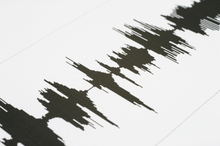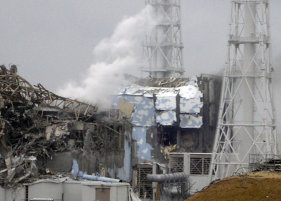 As Hurricane Sandy approaches the East Coast, many are wondering about the science behind this ‘Frankenstorm’ and whether it has any clear connection to global climate change.
As Hurricane Sandy approaches the East Coast, many are wondering about the science behind this ‘Frankenstorm’ and whether it has any clear connection to global climate change.
In a piece titled ‘Frankenstorm: Has Climate Change Created a Monster?’, NPR’s Adam Frank notes that 2012 has been a banner year for weather anomalies: droughts, fires, floods, and extreme temperatures. But while some of those events can be tied to climate change, others cannot.
The Science Behind Hurricane Sandy: Climate Change or Freak Storm?
Magnitude 7.7 earthquake hits Canada
 A strong 7.7 magnitude earthquake has struck the Queen Charlotte Islands off the west coast of Canada, US government researchers said. The epicentre of the tremor, which occurred at 8:04 local time was located 139 kilometres south of the town of Masset, the US Geological Survey said.
A strong 7.7 magnitude earthquake has struck the Queen Charlotte Islands off the west coast of Canada, US government researchers said. The epicentre of the tremor, which occurred at 8:04 local time was located 139 kilometres south of the town of Masset, the US Geological Survey said.The Pacific Tsunami Warning Center said there was no threat of a tsunami at this time.
More...
Fracking Fukushima Batman—Is that a Natural Gas Well Near a Nuclear Power Plant?
 On Oct. 3, Chesapeake Energy was issued a permit by the Pennsylvania Department of Environmental Protection (DEP) to drill for natural gas by fracking one mile from the Beaver Valley Nuclear Power Station in Shippingport, Pennsylvania.
On Oct. 3, Chesapeake Energy was issued a permit by the Pennsylvania Department of Environmental Protection (DEP) to drill for natural gas by fracking one mile from the Beaver Valley Nuclear Power Station in Shippingport, Pennsylvania.
This is disturbing news considering in January evidence proved that Ohio earthquakes were caused by a fracking wastewater injection well.
Radiation still leaking into nearby Japanese waters 18 months after quake, tsunami

That suggests that radiation from the plant is still being released into the ocean, wrote Ken Buesseler, a marine of the Woods Hole Oceanographic Institution in Woods Hole, Mass., in a perspective article in Friday's edition of the journal Nature.
The Word from Pennsylvania: Fracking Isn’t Worth It
Within the swirl of propaganda floating around about the supposed benefits of fracking for natural gas, one theme seems to have unfortunately been taken to heart by some folks who are understandably anxious about these economically trying times.
The idea, that fracking will bring immediate wealth and prosperity to those who engage with it, is as alluring as it is false.
5 Weird and Frightening Effects of Fracking You May Not Know About
What comes to mind when you think of fracking? Perhaps it’s images of tap water being lit on fire or stories of families suffering health problems after nearby wells are fracked.
Indeed, the health and environmental impacts of fracking are being documented, but it’s important to know that fracking is a catalyst for widespread negative consequences. This list includes five effects of fracking you may not have heard about.
Methane found in drinking water across Texas brings concern to the Lubbock community
Hydraulic fracturing contaminating the drinking water is a concern to the Lubbock community.
The city of Lubbock held its monthly Board of Health meeting Friday afternoon at the Civic Center to discuss the updates on hydraulic fracturing.
Board member and activist LeAnn Lamb-Vines said studies have shown that methane has been found in drinking water in different areas of Texas.
“After we were reviewing these studies, we did find what I consider sufficient, scientific grounds for serious concerns,” Lamb-Vines said. “There has been some strong, scientific evidence for groundwater contamination coming from these studies.”
More Articles...
Page 88 of 201

 Environmental Glance
Environmental Glance






























